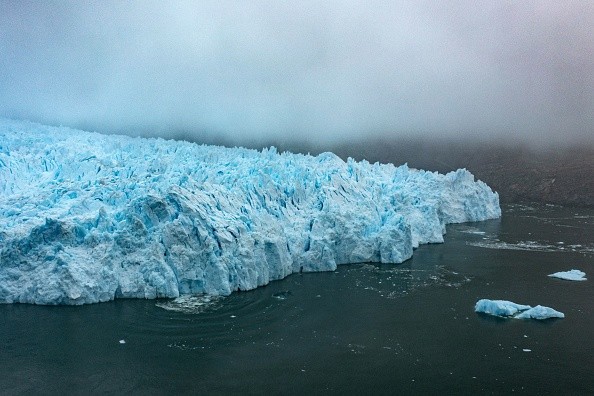
According to a Penn State-led team of scientists, dark patches of the open sea that develop in the ice-choked seas surrounding Helheim Glacier may give fresh information about how a fast-changing Greenland glacier loses ice.
According to Sierra Melton, a doctorate candidate in geosciences at Penn State, Greenland is losing a lot of ice, which flows from the interior of the ice sheet to the ocean via outlet glaciers like Helheim.
It's critical to understand what's going on with these glaciers.
During warm seasons, enough meltwater flows from under Helheim, causing plumes of buoyant freshwater to rise to the surface of the sea in front of the glacier and be seen as patches of open water, according to scientists.
Helheim calving
Calving at Helheim entails enormous pieces of ice breaking off from behind the rock at the glacier's front, which may reach 300 feet in some places, as per ScienceDaily.
Helheim used to end in a floating extension known as an ice shelf or ice tongue, similar to bigger Antarctic glaciers, but that ice has since broken off and evaporated, revealing the cliff.
According to scientists, calving accounts for almost half of the ice loss from the Greenland Ice Sheet and is a substantial contributor to sea-level rise.
Sierra's work, including in this paper, is a significant contribution to the bigger effort to better understand how iceberg calving works and what control mechanisms for its speed, so we can do a better job of trying to project what will occur in Greenland and Antarctica, and what that means for sea-level rise and coastal people, said Richard Alley, Evan Pugh University Professor of Geosciences at Penn State, Melton's adviser and a co-author on the paper.
While the association between plumes and calving has been detected earlier at Helheim, obtaining direct observations is challenging due to inaccessible terrain on the glacier and ice in the sea.
A more in-depth investigation was carried out by the scientists, who used high-resolution satellite photographs and hundreds of time-lapse photos taken by cameras stationed throughout the world.
Helheim is a part of a larger pattern
Glaciers have an annual cycle, melting in the summer and growing in the winter due to seasonal variations in temperature and rainfall, as per the Climate hot map.
Greenland has seen both temperature changes patterns throughout the last century. However, the warming since 1995 has resulted in bigger changes than any observed before 1950.
Those in Helheim glacier, like variations in many other glaciers, have been connected with changes in local temperatures.
For example, the Helheim endpoint remained very steady from the 1950s to 2000, roughly when summer temperatures in Greenland were colder than usual (late 1960s to mid-1990s).
The quick loss of glaciers like Helheim has startled scientists, who anticipated the ice sheets to respond to climate change more slowly.
Instead, glaciers flowing from ice sheets appear to respond almost instantly to variations in seasonal and yearly regional temperatures.
The warmer summers of 2002, 2005, and 2007 all beat the previous record for ice sheet melting in Greenland.
Because darker surfaces absorb more heat, all of this melting has begun to expose rock and soils (as well as the ocean in locations where sea ice has melted), which in turn promotes additional melting.
Positive feedback, often known as amplification, is used in this situation.
Local summer temperatures began to rise in 1995, and the Helheim glacier terminus began a fast retreat in 2001, totaling roughly five miles (more than 7.5 kilometers) by 2005.
© 2025 NatureWorldNews.com All rights reserved. Do not reproduce without permission.

